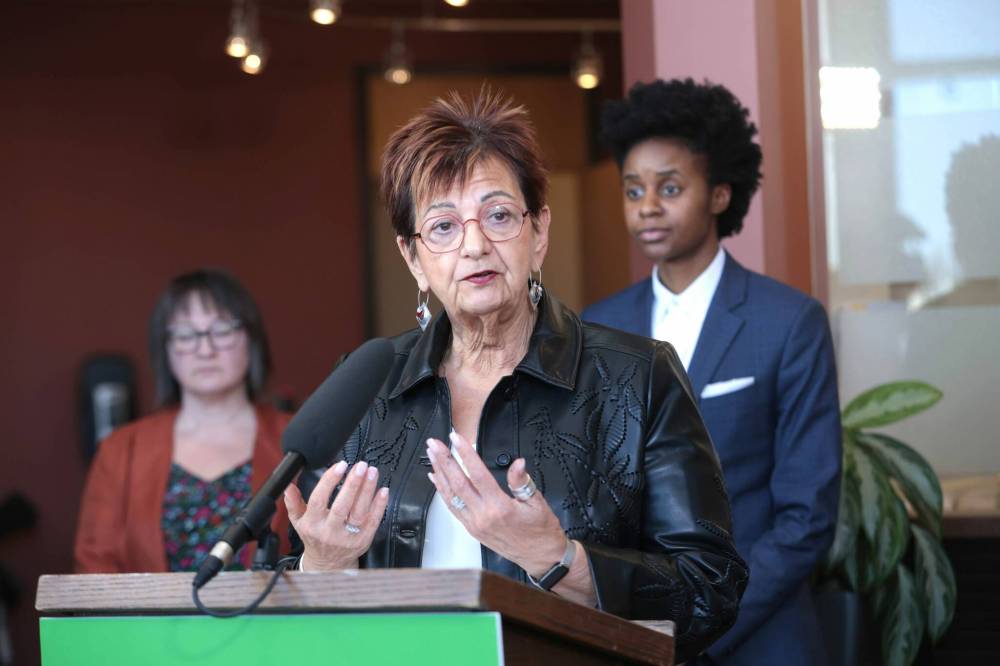More health workers, but where exactly are they?
Advertisement
Read this article for free:
or
Already have an account? Log in here »
To continue reading, please subscribe:
Monthly Digital Subscription
$0 for the first 4 weeks*
- Enjoy unlimited reading on winnipegfreepress.com
- Read the E-Edition, our digital replica newspaper
- Access News Break, our award-winning app
- Play interactive puzzles
*No charge for 4 weeks then price increases to the regular rate of $19.00 plus GST every four weeks. Offer available to new and qualified returning subscribers only. Cancel any time.
Monthly Digital Subscription
$4.75/week*
- Enjoy unlimited reading on winnipegfreepress.com
- Read the E-Edition, our digital replica newspaper
- Access News Break, our award-winning app
- Play interactive puzzles
*Billed as $19 plus GST every four weeks. Cancel any time.
To continue reading, please subscribe:
Add Free Press access to your Brandon Sun subscription for only an additional
$1 for the first 4 weeks*
*Your next subscription payment will increase by $1.00 and you will be charged $16.99 plus GST for four weeks. After four weeks, your payment will increase to $23.99 plus GST every four weeks.
Read unlimited articles for free today:
or
Already have an account? Log in here »
Hey there, time traveller!
This article was published 11/02/2025 (298 days ago), so information in it may no longer be current.
Manitoba’s NDP government says hundreds of new health-care workers have been hired in hospitals, clinics and doctors’ offices over the past nine months.
However, there are questions about whether the new staff — including nearly 500 additional nursing positions — has made a dent in hospital overcrowding, or whether it will lower stubbornly high wait times for surgical and other procedures.
The province announced Friday that 1,255 net new health workers have been added to the system between April 1, 2024 to December 31, 2024. The numbers were calculated using payroll data from health authorities as well as information from regulatory bodies, such as the College of Physicians and Surgeons of Manitoba.

RUTH BONNEVILLE / FREE PRESS
Darlene Jackson, president of the Manitoba Nurses Union
It’s unclear where the new staff are working since the province did not provide a breakdown by facility. According to the data, the new hires include an additional 138 physicians, 481 nursing positions, 386 health-care aides, and 162 allied health workers (which includes physiotherapists, occupational therapists and radiation technologists).
That would seem to be good news for a health-care system that has been acutely understaffed for years, leading to congested emergency rooms and long wait times for procedures such as hip and knee surgery.
However, the heads of at least two unions representing health-care workers say their members are not seeing the effects of the new hires on the front lines.
“Where are they?” asked Darlene Jackson, president of the Manitoba Nurses Union, of the additional staff. “Because nurses are not seeing the impact of having more nurses in the system.”
Jason Linklater, president of the Manitoba Association of Health Care Professionals, said there’s a disconnect between the government’s figures and what its members are seeing in hospitals and other health-care facilities.
“Right now, there are at least 1,000 vacant allied health positions … (The province is) not on track to fix health care.”
According to the province’s own data, wait times for hip and knee replacement surgery and for diagnostic tests such as MRIs, CT scans and ultrasounds were longer in 2024 than in 2023. Emergency room wait times in Winnipeg were down slightly in December compared with the same month a year earlier, according to the latest available data. But ER wait times have been growing again in recent months.
Granted, it will take time to reduce hospital congestion and bring down wait times. And it will probably require more than 1,255 net new hires to see tangible improvement in the system. But it is clear that without more front-line staff — including doctors and nurses — hospitals can’t increase surgical capacity, add new hospital beds, or increase the volume of diagnostic testing.
Dr. Kristjan Thompson, the chief medical officer at St. Boniface Hospital, said new staff members have allowed the facility to increase its internal medicine and critical-care bed numbers. That has resulted in improved services on weekends, he said.
Still, the province has not said how many more hires are required to improve patient care overall, nor what the targets are for wait times.
Thompson said there are still high levels of physician burnout at the hospital, which has among the highest ER wait times in Winnipeg.
It would be useful for the province to release projections on how much more capacity is needed in the system and how many more frontline staff it would require to cut wait times to acceptable levels.
Adding 1,255 net new health-care workers is a good start. But it appears much more is needed.


